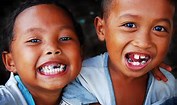






Teens aged 12 to 15 experienced 'mild to moderate' side effects to jab, study finds
Side effects from the Pfizer jab in children aged between 12 and 15 were mostly 'mild or moderate', a study has found.
Researchers in Bristol looked at 27 children whose parents recorded any side effects after the jab.
Adverse reactions were either mild or moderate in all of the young people, except one who had "severe fatigue and severe discomfort combined with increased agitation."
But experts said the small size and scope of the study does not allow for conclusions on rare side effects or inform the debate on vaccinating healthy younger teens.
Currently, children aged between 12 and 15 who are clinically vulnerable to Covid or live with adults who are at increased risk of serious illness from the virus are eligible for a coronavirus vaccine.
There have been calls from some to extend the rollout to all healthy 12 to 15-year-olds, especially as the return of schools is expected to lead to a rise in infections.
The Joint Committee on Vaccination and Immunisation (JCVI) has not given a recommendation to widen the rollout to this age group, but the NHS in England is reportedly making preparations to enable it to proceed if there is a decision to do so.
All of the participants in the study were children with severe neurodisabilities who tend to get recurrent respiratory infections and spend time in residential care.
Researchers said one family reported a change in seizure type but this had been resolved a week after the vaccine.
Effects in six of the children after a first dose included a mild rash, headache, diarrhoea, presumed sore throat, neck pain, difficulty sleeping and low blood sugars.
But all of these had gone away within 72 hours, according to the study, which is due to be published in the Archives of Disease in Childhood.
Five of the children had effects including diarrhoea, vomiting, armpit swelling and blisters around the mouth after the second dose.
The researchers said fever was more common than in adult studies, with 13 per cent of the children having a temperature greater than 38C compared with 4 per cent in people aged between 16 and 55.
Other recorded adverse events all resolved within a week, the study by scientists from the department of paediatric immunology and infectious diseases at Bristol Royal Hospital for Children and the University of Bristol noted.
They said: "Numbers were small but these data are especially important as they are representative of the children who are most likely to benefit from vaccination and parents and clinicians may have concerns regarding an increased risk of unexpected events."
Russell Viner, professor of adolescent health at UCL Institute of Child Health, noted that the study "should reassure parents and doctors that there are no special precautions or issues with this vaccine in this small group of children".
He added: "However these data can tell us very little about rare side effects or about vaccinating healthy teenagers or those with common conditions such as asthma and diabetes. For that we must await further data in the order of millions of doses."
Dr David Elliman, a consultant paediatrician at Great Ormond Street Hospital, said: "This is a small study, as the authors point out, and it is not explained how these patients were chosen to be included.
"It is useful to know the nature of the reactions to the vaccine, not all of which were minor, but because of the size of the study it would be unwise to assume that this picture could be generalised to a larger group of similar children."
- Nine things you must consider before adopting a child
- An Overview of Psoriasis in Children
- DIY Fertility Tests Are On The Rise, But How Reliable Are They?
- Dentist shares when children should stop using dummies - or risk bite issues
- Top 10 benefits of breastfeeding
- Reye's syndrome: The illness that affects children
- Diphtheria symptoms: Everything you need to know after case confirmed at UK school
- Children with 'prominent' forehead may in fact be suffering from a dangerous illness
- Study assesses links between early negative life events, orbitofrontal cortical thickness and depression in young adults
- Placenta tumour: My miracle baby gave me cancer
- 7 things to look out for when it comes to vaginal health, according to gynaecologists
- What is the vaginal microbiome?
- What every woman should know about hormones, the pill and cancer
- Doctors sound alarm over new infant fentanyl syndrome
- How to boost your child’s memory
- How to Teach Deaf Children to Read
- Speaking to babies in sing-song speech ‘helps them learn language’
- Enzyme therapy approved for rare genetic condition in babies
- Paris Hilton opens up about decision to have children via surrogate
- Urgent, gentle care: life on a neonatal unit
- Woman, 70, 'gives birth to twins after IVF treatment': Ugandan becomes the oldest person to give birth in Africa, hospital says
- Scarlet fever symptoms: What parents should look out for as UK cases surge by 70 per cent
- Vaccine to tackle bronchiolitis to be offered to children next year
- What is baby-led weaning?
- What are the symptoms of tonsillitis and how is it treated?
- Home
- Aches and Pains
- Children - Insomnia
- New Born Babies
- Babies From 2-12 months
- Spina Bifida
- Equipment Used
- Drug Abuse
- Other Ingredients
- The Handicapped Child
- Videos
- BALANITIS - Aromachildhood
- Worms
- Corona virus and pregnancy
- Contact Us
- Essential Oils for General Purposes
- The Methods - Aromatherapy - Children-2
- Hydrolats, Essential Oil Waters, and infused Oils
- Ringworm
- The Methods - Aromatherapy - Children- 3
- Basic Care Kit - Children - Essential Oils
- Web Links
- Acne
- Adolescent Acne
- The A - Z of Conditions
- Arthritis (juvenile Rheumatoid)
- Herbal Healing Infused Oils
- The Cave Man Eating Plan
- Things To Make For Your First Aid Cabinet
- The Basic Care Kit For Children
- Verrucas and Warts
- Caring Touch Massage
- The Methods - Aromatherapy - Children
- The Methods - Aromatherapy - Children - 4
- Athlete's Foot - 2
We have 6 guests and no members online







